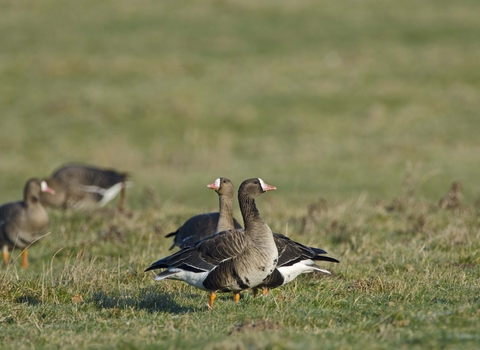
©David Tipling/2020VISION
White-fronted goose
The white-fronted goose lives up to its name - look out for the white patch on its forehead and around its bill. It does not breed in the UK, but flies here from Greenland and Siberia for the 'warmer' winter weather.
Scientific name
Anser albifronsWhen to see
October to MarchSpecies information
Category
Statistics
Length: 65-76cmWingspan: 1.4m
Weight: 2.5kg
Average lifespan: 6 years
Classified in the UK as Red under the Birds of Conservation Concern 5: the Red List for Birds (2021). Protected in the UK under the Wildlife and Countryside Act, 1981. Priority Species under the UK Post-2010 Biodiversity Framework.
